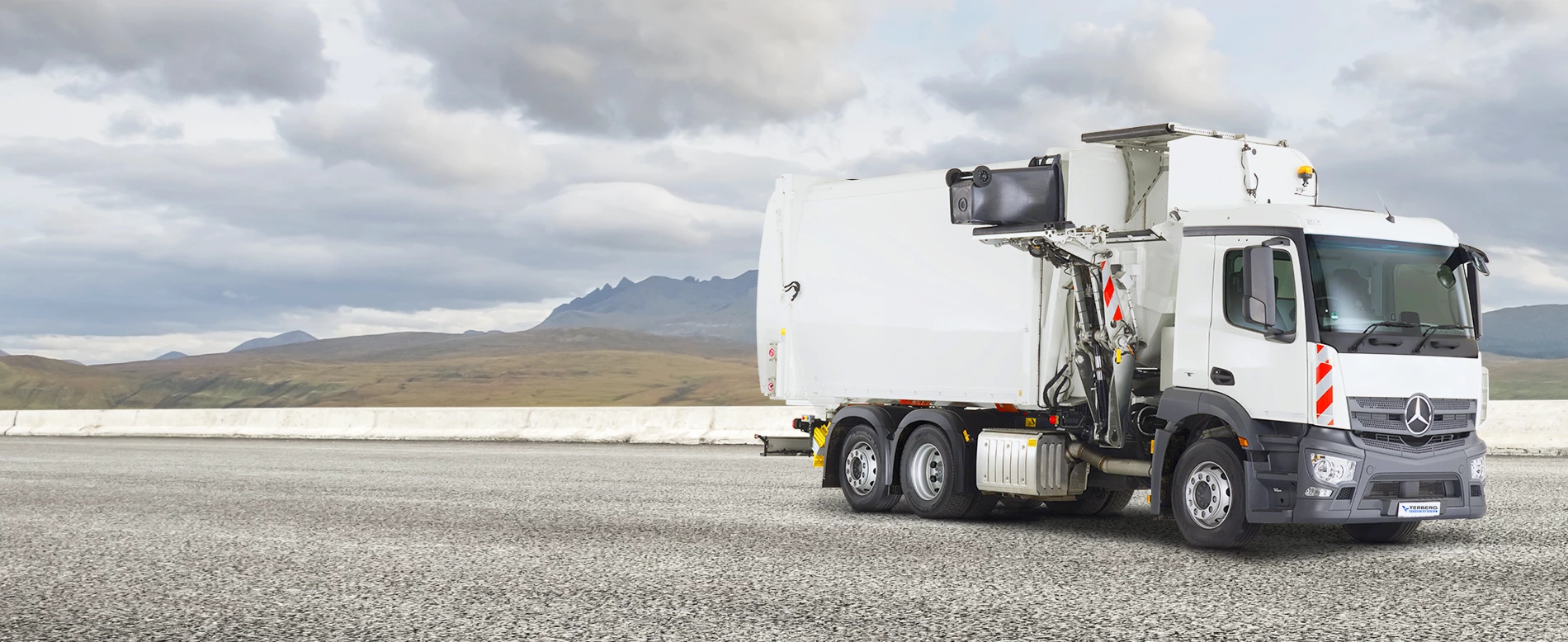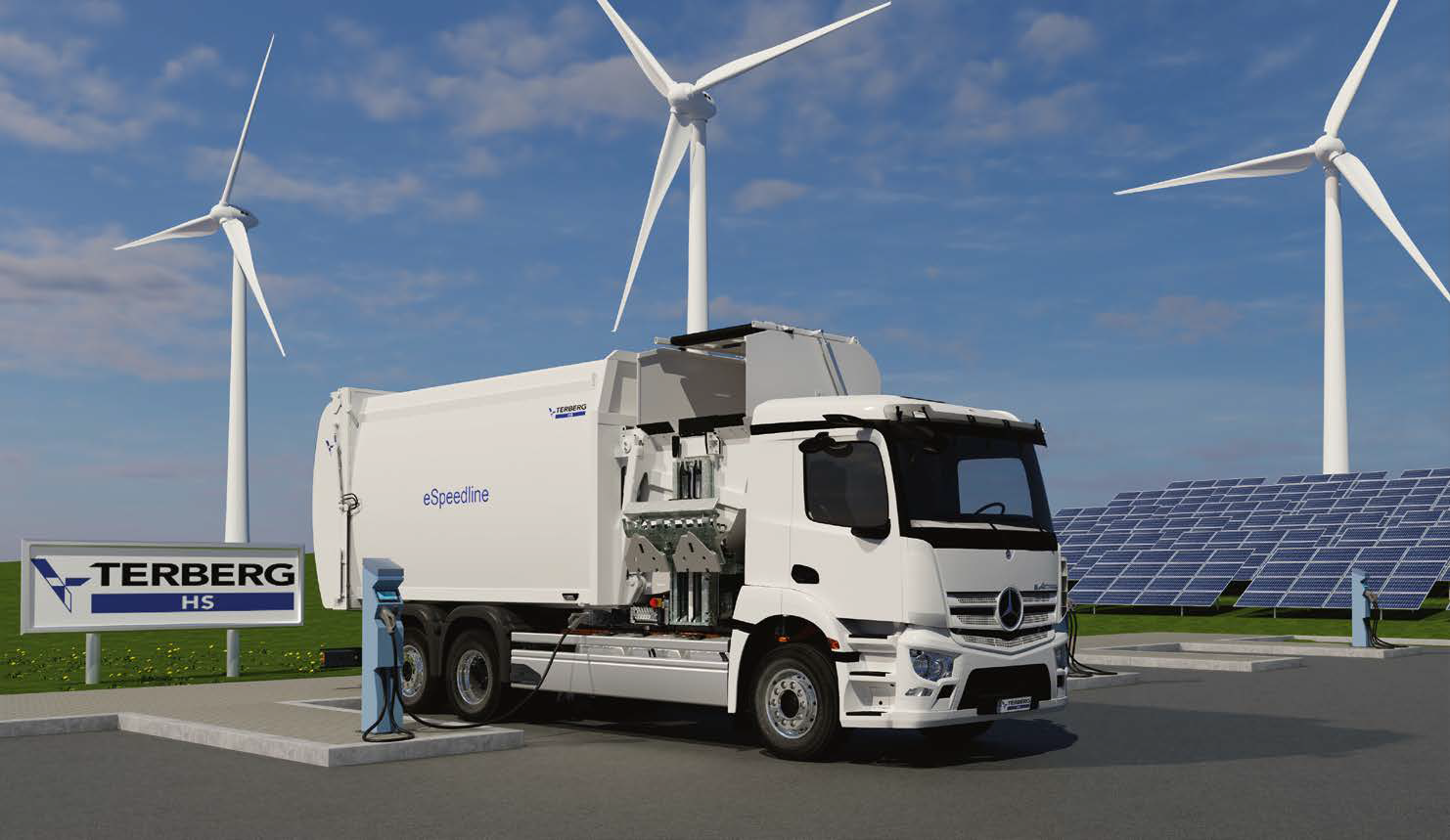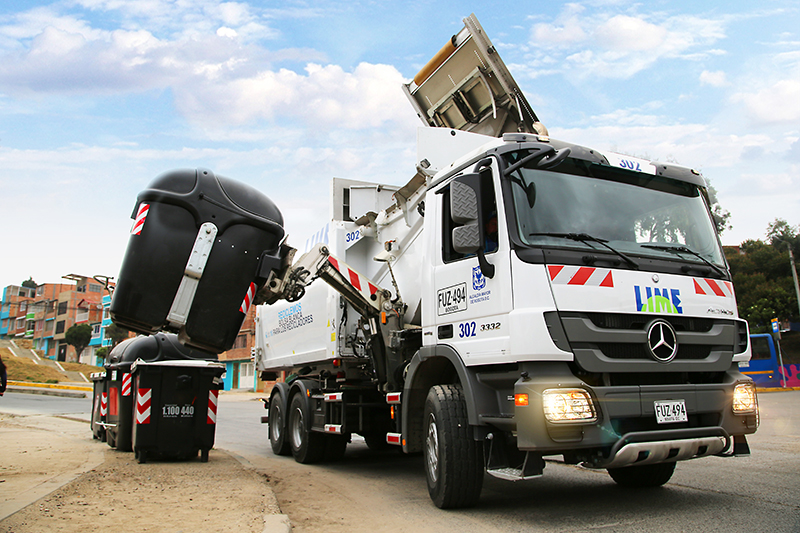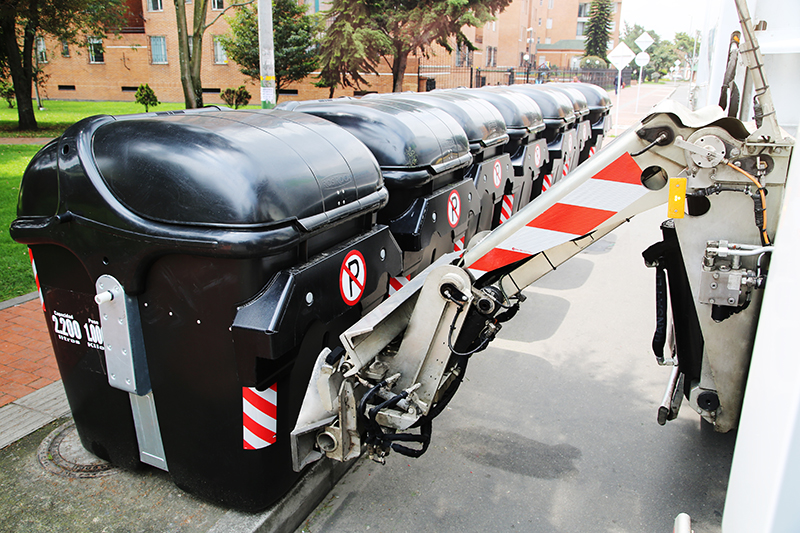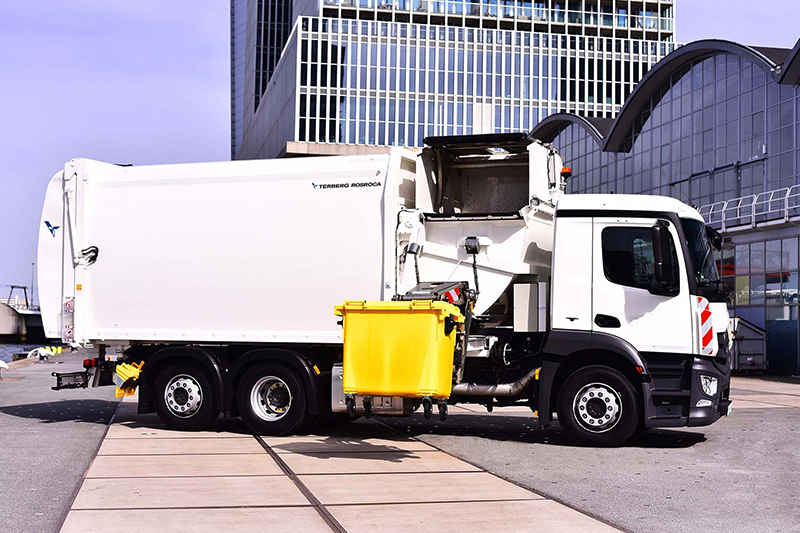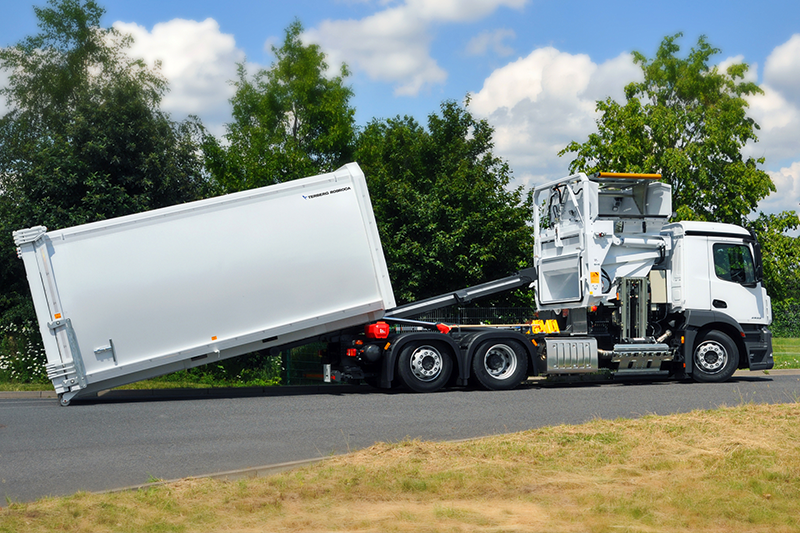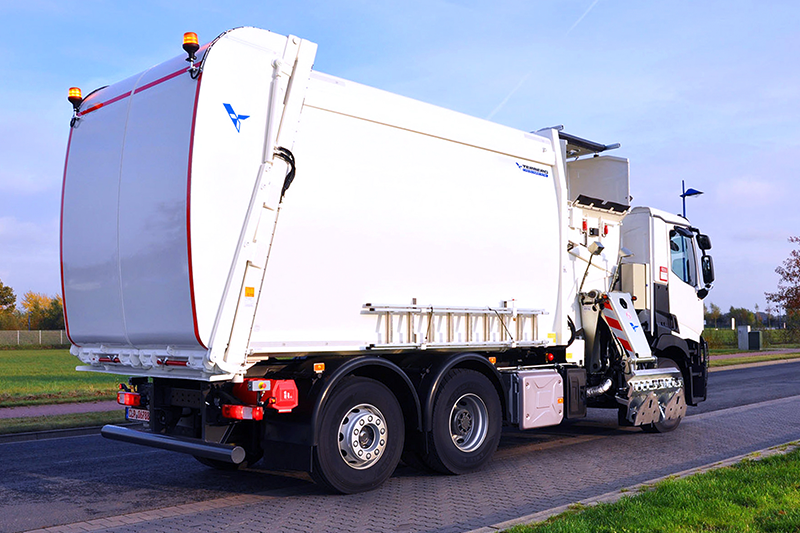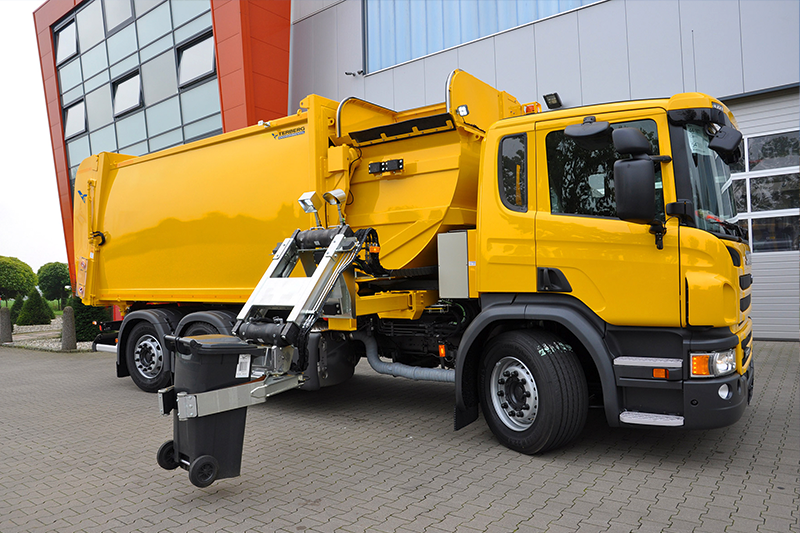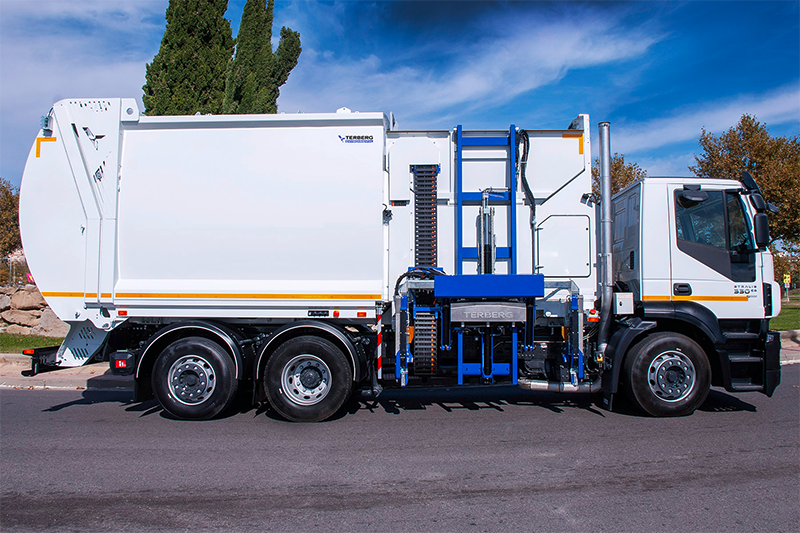SPEEDLINE SLM: Fully automated collection for large containers
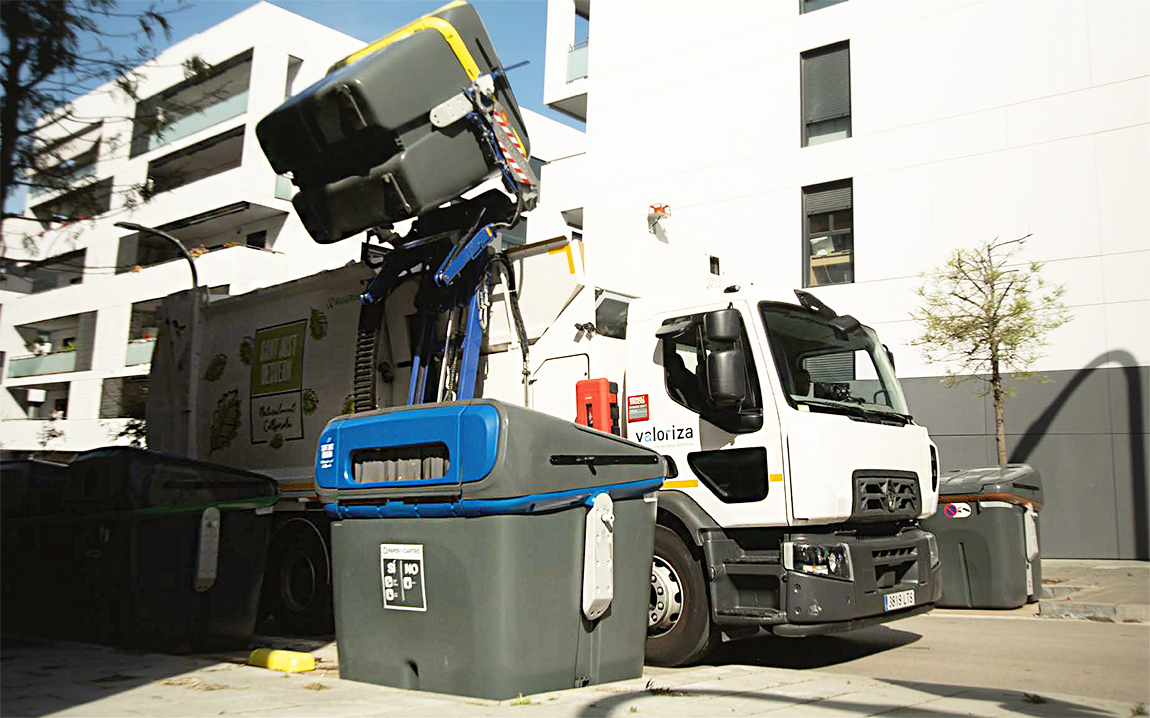
Our Ros Roca manufacturing centre in Tárrega also builds side loaders optimised for the local market. Product manager Javier Varela explains “Here in Spain, side loading is the main method used in large cities, such as Barcelona and Valencia. Residents put their materials in large road-side bins. These have trunnions at the sides and are traditionally picked up by a rear mounted bin lift with special arms.
Ros Roca introduced side loading in Spain more than 30 years ago and therefore has a great deal of experience in this system. Since the merger with Terberg, the development of what is now the Speedline SLM began. When developing the Speedline SLM side loader we worked closely with Terberg Machines, benefitting from their wide experience in bin lift design and manufacture. The SLM lift arms slide laterally to adjust to the size of bin. The bins have a capacity up to 3,300 litres so naturally the SLM has a large hopper and compaction chamber. This allows the driver/operator to empty several bins before starting the compaction cycle.
Our customers choose side loading because they feel it is safer in inner-cities than rear loading, provides a better efficiency and gives a cleaner city. In Spain, side loading collection started in larger cities, but even smaller ones such as Lleida, where I live, are now using the system. Ros Roca is already the largest supplier of rear loaders in Spain and now, with the Speedline SLM, we have the product we need to grow our side loader market share."

